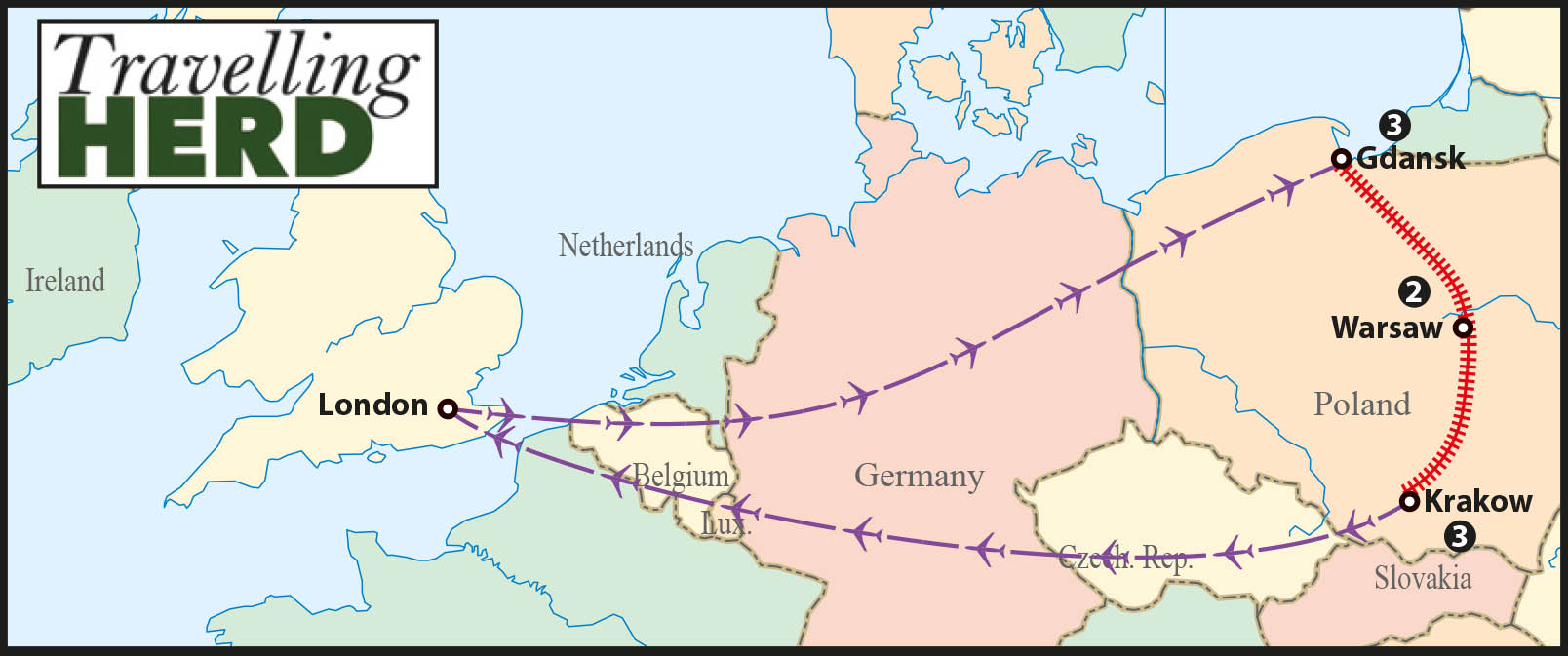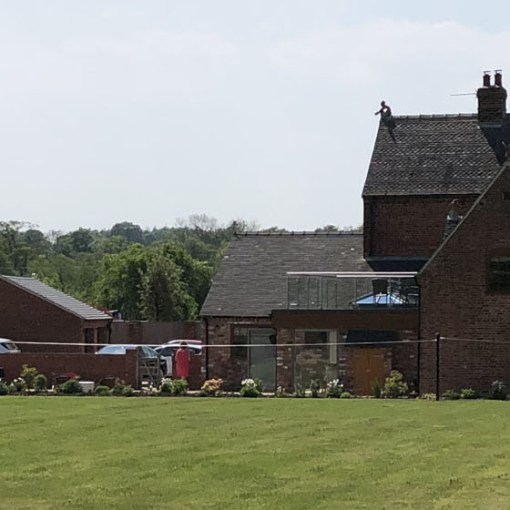Tuesday 31st January 2023
Our research had revealed that although the European Solidarity Centre is closed on Tuesdays, the Museum of the Second World War was open so we decided to make this our first cultural stop of the visit.
Our route took us past the Gdańsk Crane, which is rather less iconic when covered in scaffolding.
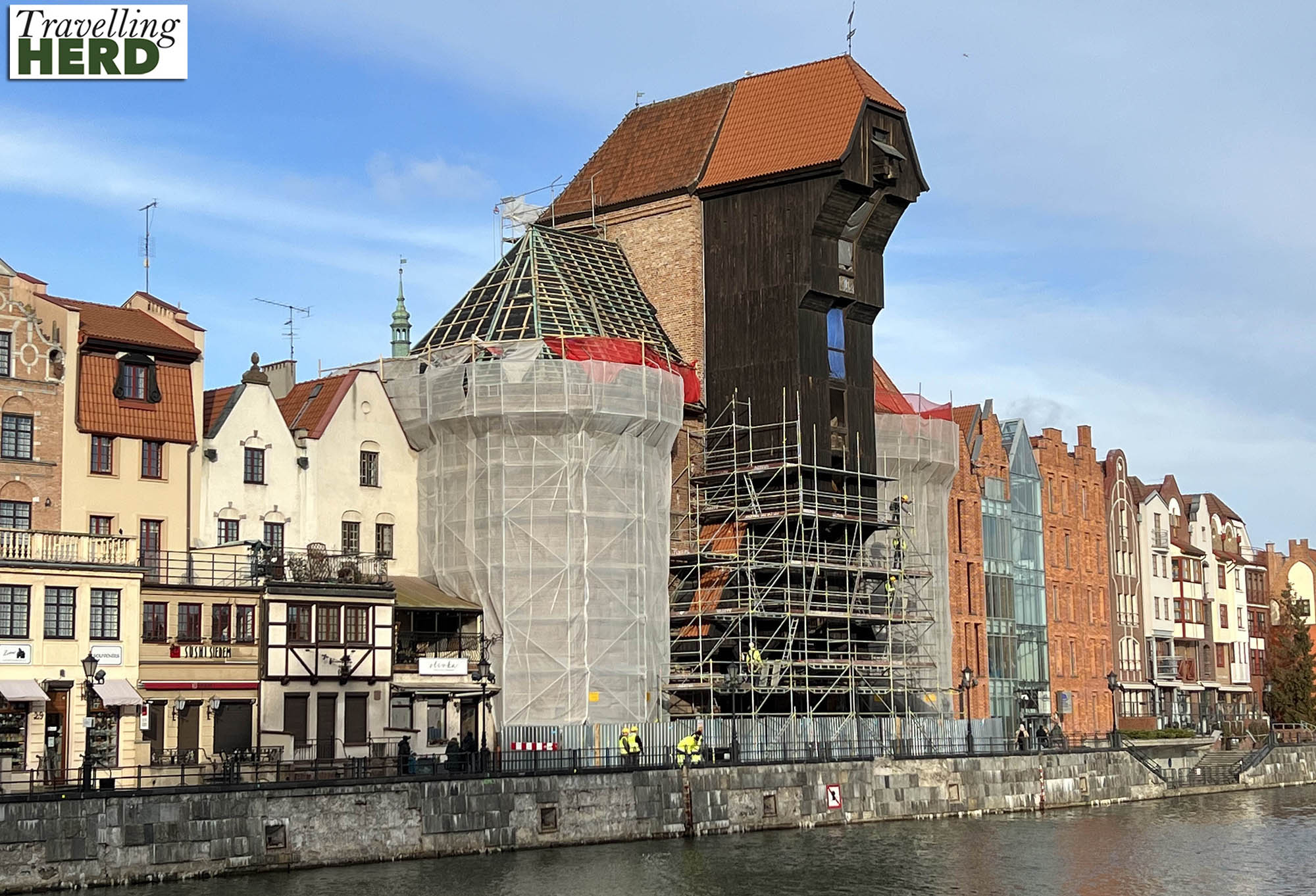
Robert wanted to sample breakfast at one of the well-known bar mleczny [milk bars]. Originally subsidised by the state, they provided affordable food for the people but with the fall of communism and the consequent removal of the state subsidy in Poland many were forced out of business. Some have nevertheless survived and Bar Mleczny Neptun is recommended for providing flavour as well as real value for money.
There was no queue when we arrived and the very obliging man behind the counter helped us to make our selection and then translated our order [see Dish of the day] for the cashier.
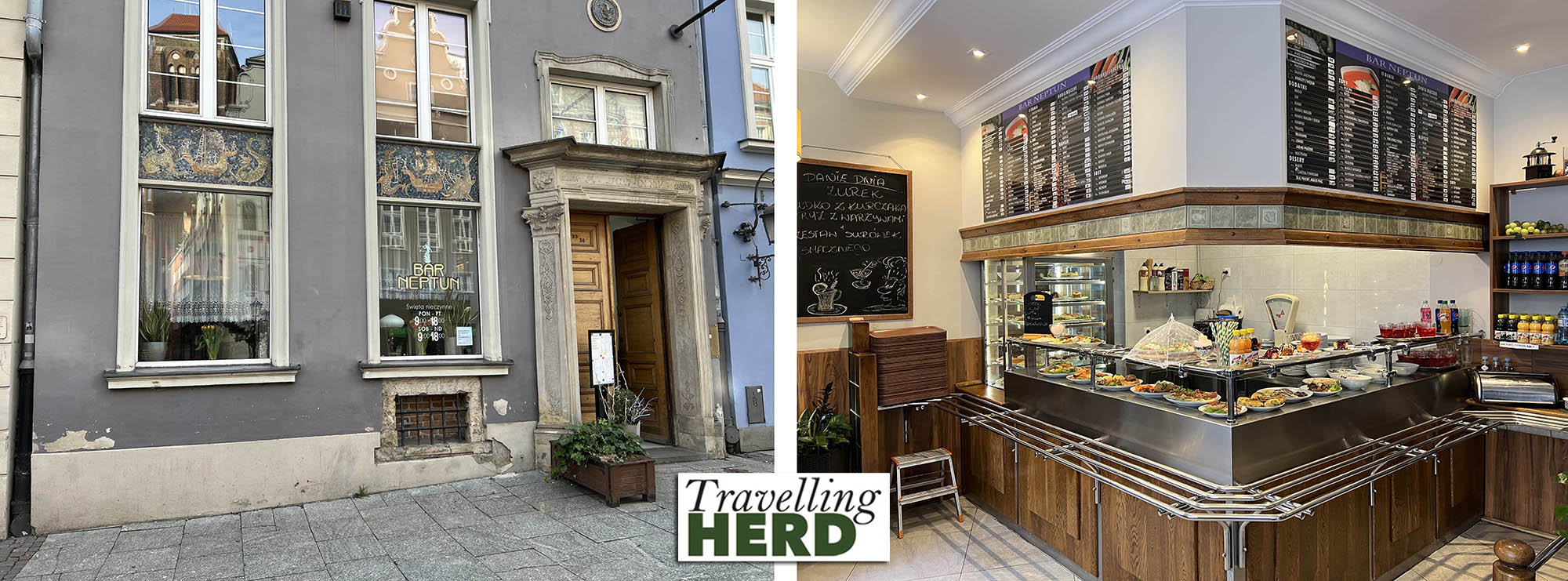
Having eaten breakfast, we walked along the Stara Motława waterfront towards the museum.
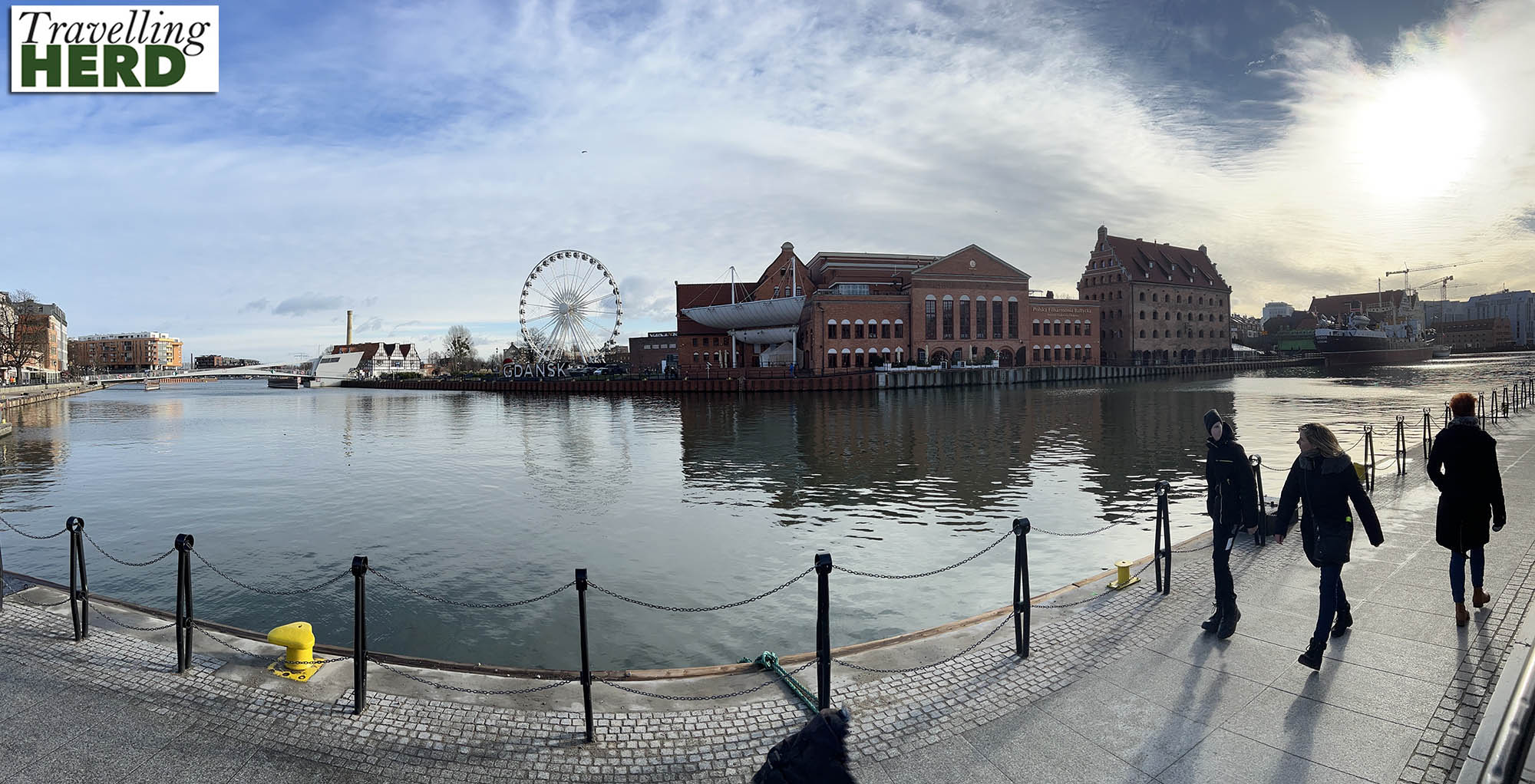
This took us past the Gdańsk sign on the opposite bank, still sporting a festive Santa hat.
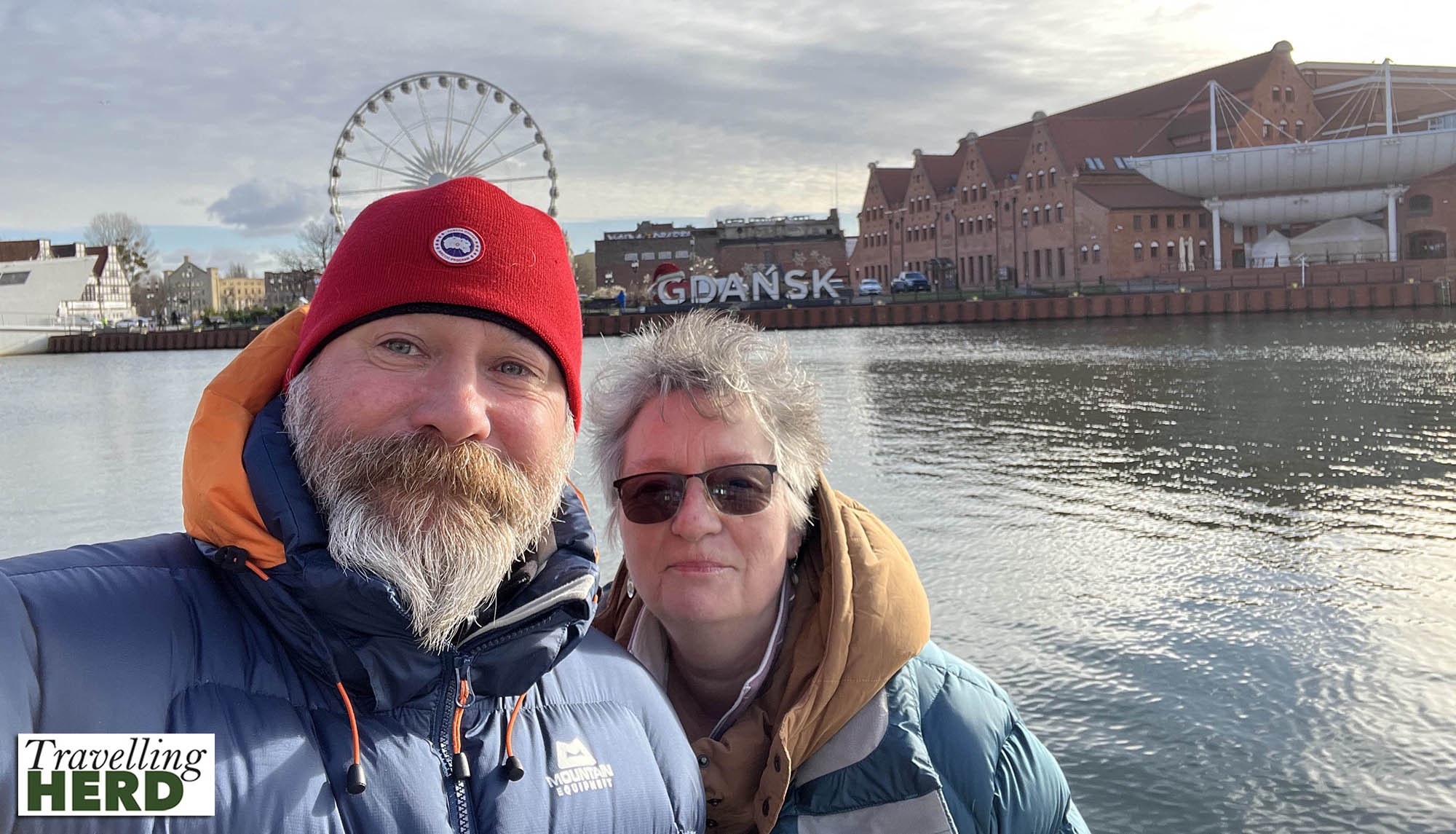
The Museum of the Second World War opened in 2017 in purpose-built accommodation and a statue of Witold Pilecki stands outside [see feature photo]. We would learn more about this incredibly brave man inside.
When we arrived at the Museum of the Second World War we were pleasantly surprised to discover that we had chosen to visit on a day when entry was free.
The museum’s 18 display sections are located 14m underground. Navigating the museum is very easy – the various exhibitions branch off from the Main Hall and cover the factors leading to the outbreak of WWII, the war itself and its continuing impact.
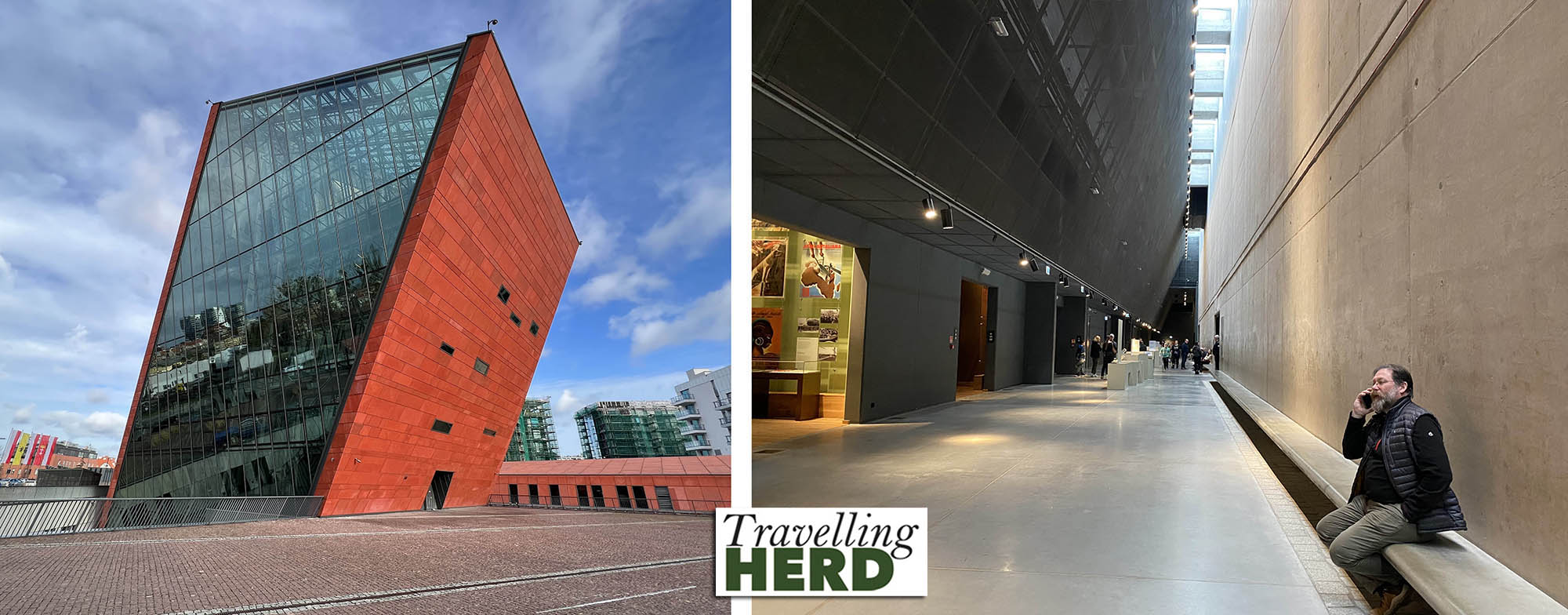
The Main Hall [above right] is designated as a place to rest between the different sections of the exhibition. It is 122m long and was built in the exact spot where Wielka Street ran until 1945 before it was largely destroyed. Some of the original cobblestones have been integrated into the floor and Robert found it was empty enough to be able to take a call from the UK in between visiting exhibition sections.
The main exhibition covers almost 5,000 m2 and is therefore able to include some imposing exhibits such as a reconstruction of a Gdańsk street from the time of the outbreak of the war.
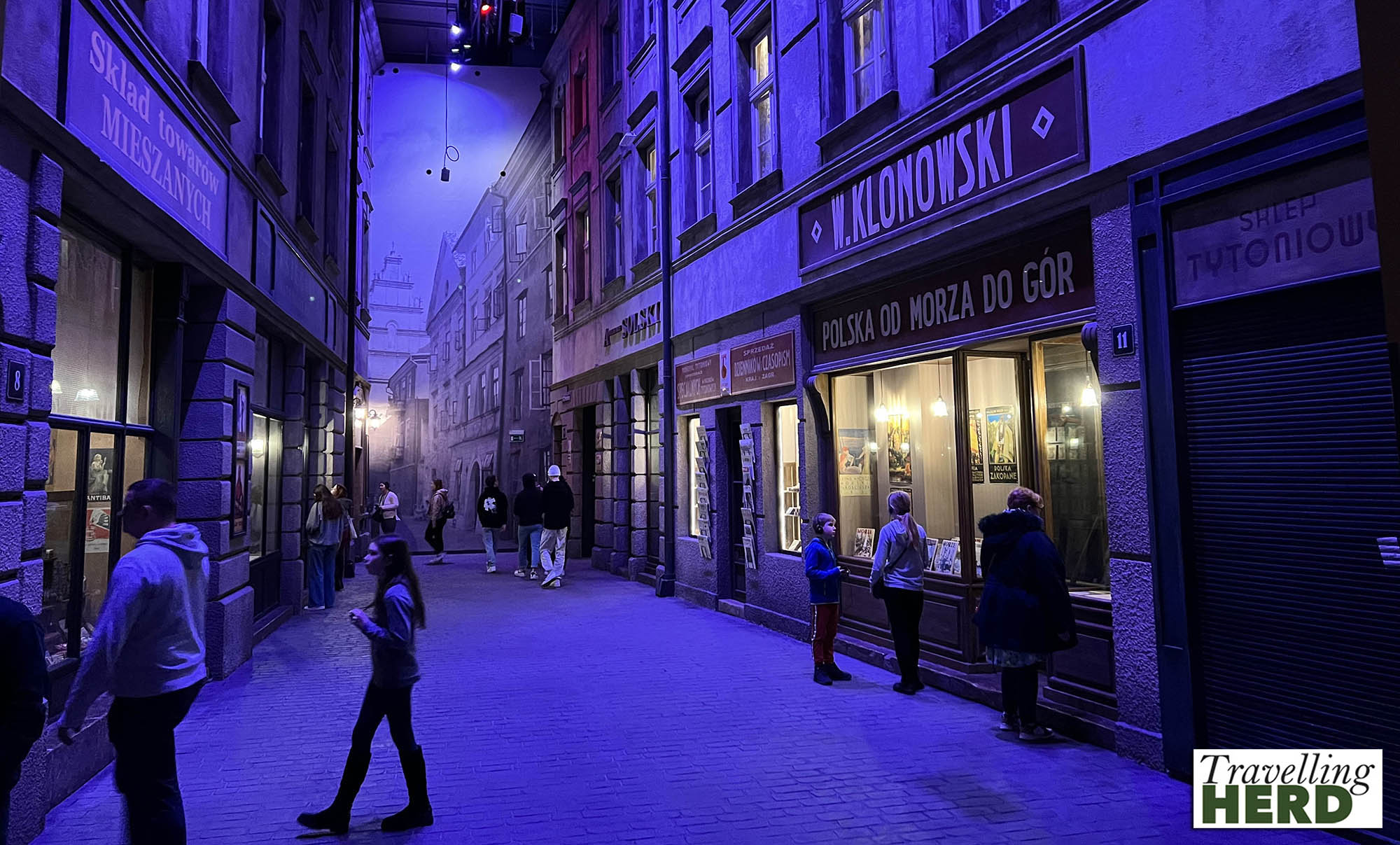
Part of a Messerschmitt plane hangs from high up on one wall and, ironically, from some angles it almost looks like a friendly Pixar style animation.
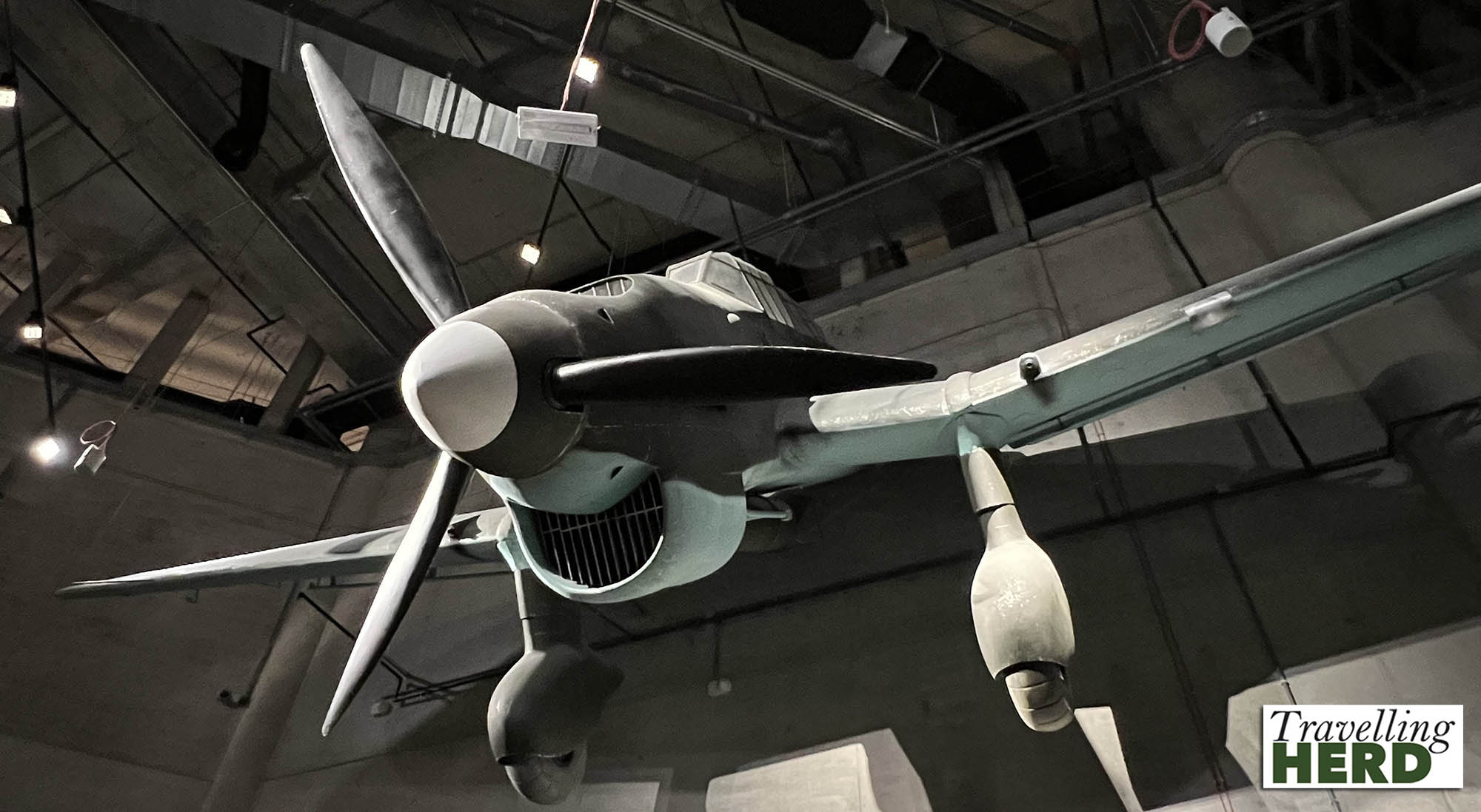
Marian Rejewski [1905 – 1980] was a talented cryptologist and mathematician employed by Polish military intelligence and in December 1932, before the outbreak of the war, he was the first person to break the code of the German Enigma encryption machine. In July 1939 the Polish shared this information with the English and French and this formed the basis of the Allied decryption at Bletchley Park of encoded messages from Nazi Germany. The museum cites this as ‘one of the greatest Polish contributions to the victory over Nazi Germany.’
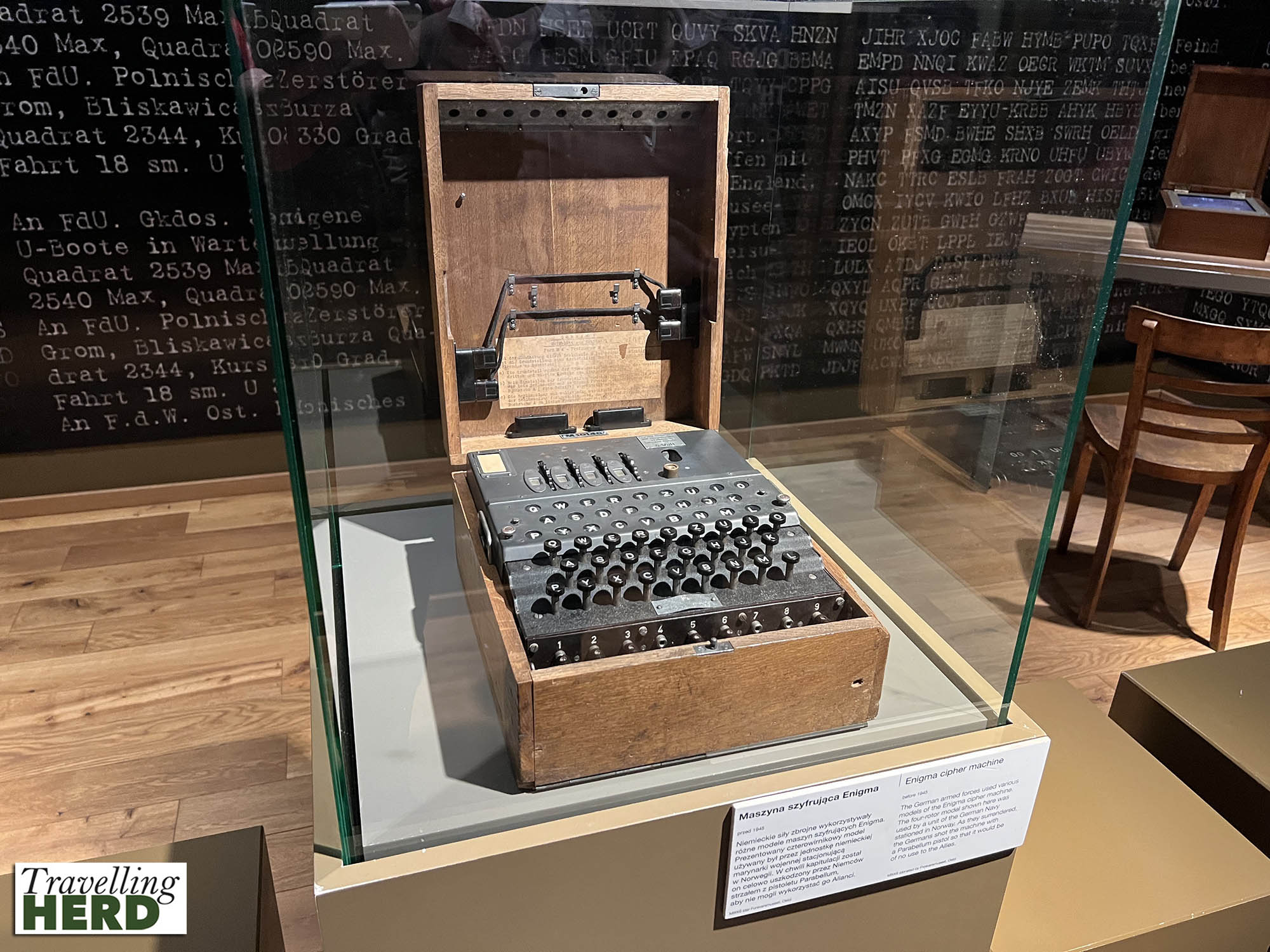
The museum also has two tanks on display, a Sherman and a Russian model in a reconstruction of the destruction inflicted on the city.
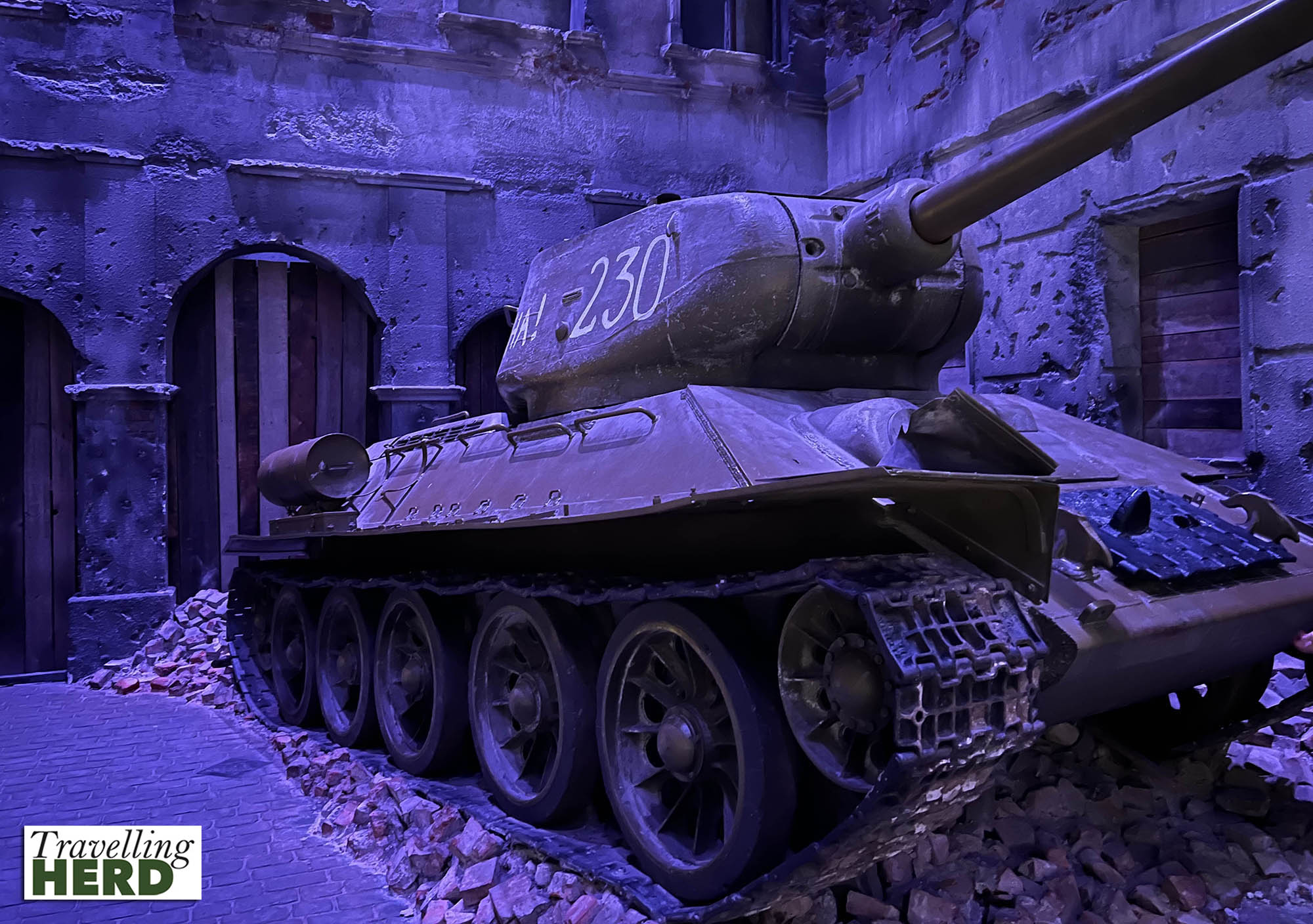
One room was dedicated to the dropping of the atomic bombs on Hiroshima and Nagasaki in Japan. A life-sized replica bomb was hanging from the ceiling and it was strange to think that something this small could have wreaked such unbelievable destruction.

At the end of WWII, although Poland was on the side of the victorious Allies, and its people had fought valiantly for their freedom, the country was betrayed in the carve up agreed by Churchill, Stalin and Roosevelt. Left behind the Iron Curtain under the control of the USSR, the people were oppressed, imprisoned and executed under the communist regime. It took nearly forty years and the peaceful rise of the Solidarność trade union for the Polish people to escape this legacy.
Witold Pilecki [see feature photo] made a significant contribution to the war effort. In 1940 he volunteered to be captured by the Germans in order to infiltrate the Auschwitz concentration camp. He is thought to be the only inmate voluntarily imprisoned there. Once there he organized a resistance movement that eventually included hundreds of inmates, and he secretly drew up reports detailing the German atrocities at the camp, which were smuggled out to the Polish resistance and Western Allies. Pilecki then escaped from Auschwitz and fought in the Warsaw Uprising of 1944. Tragically in 1947 he was arrested by the Polish secret police, on false charges of working for “foreign imperialism” and, after being tortured was executed in 1948. Having worked so hard to free the Polish from the Nazi aggression he was killed by his own people.
We would highly recommend this museum to anyone visiting the city as it provides both insights into and a context for one of the darkest periods of history.
From the Museum we walked to the Hala Targowa [market hall] which was opened in 1896 and covers three floors of a beautiful building. The lower floor is the food hall but this was not as fragrant and enticing as some we have visited.
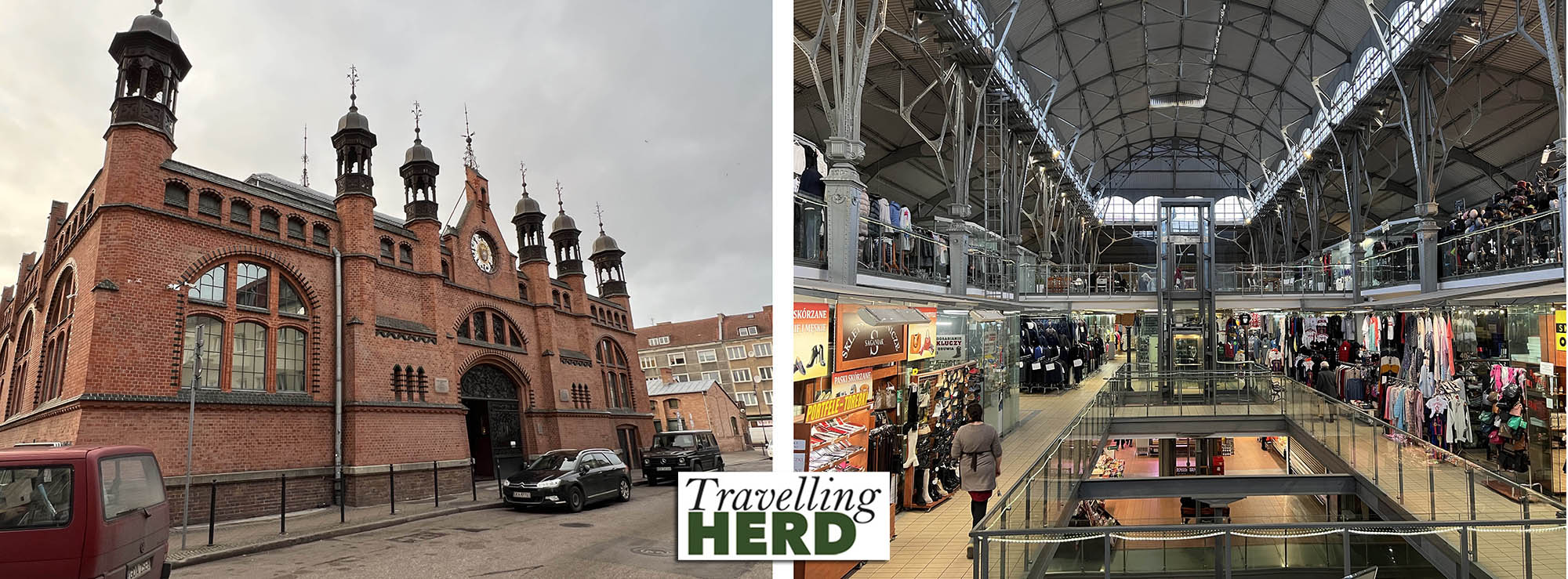
We passed Marienkirche or the Basilica of St Mary of the Assumption, an imposing gothic brick building where much of the vaulting had to be restored after WWII.

Matilda wanted to revisit Ulica Mariacka, the historic street where amber jewellery was on display in portable illuminated stalls to entice customers.
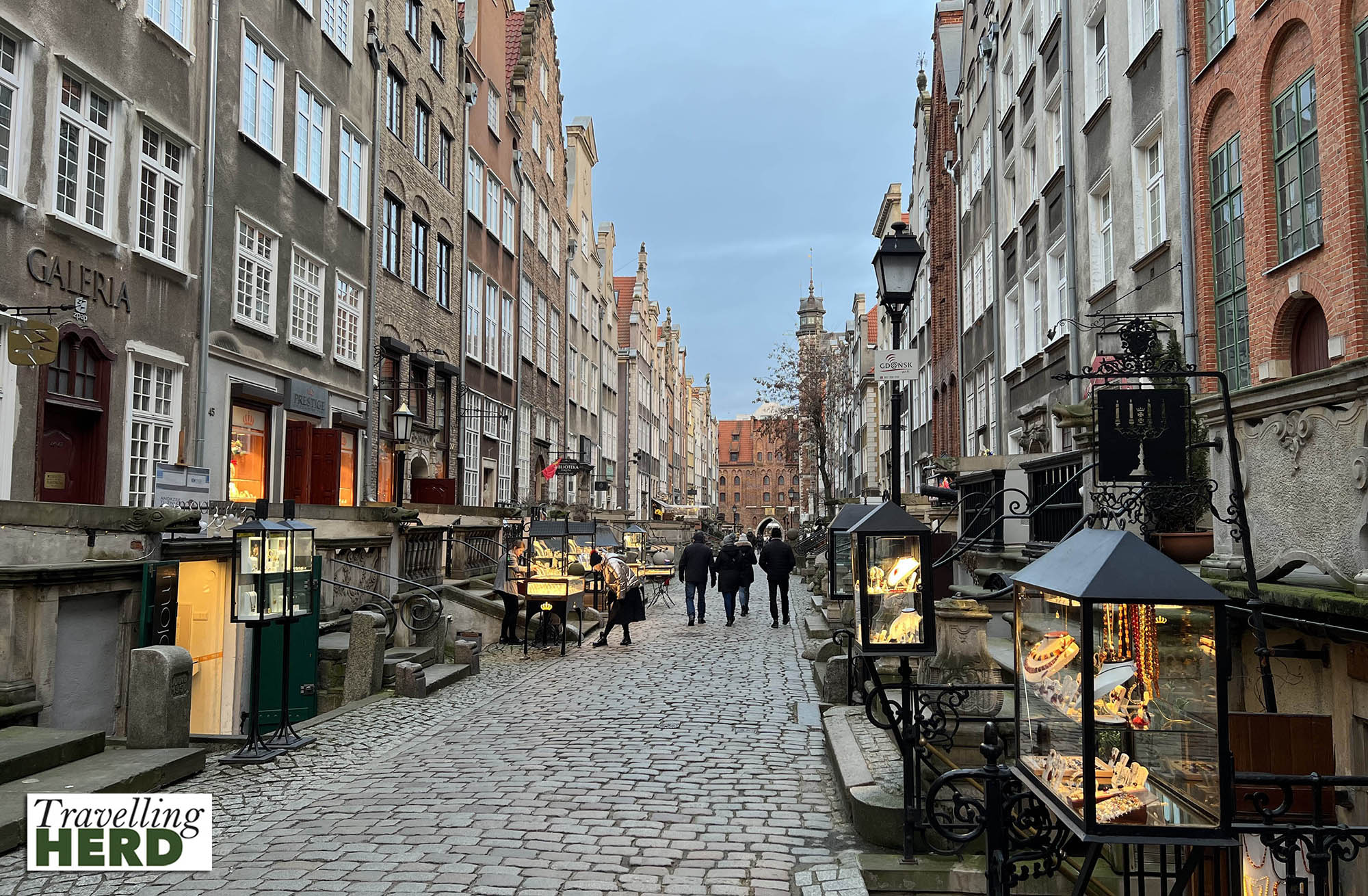
She also asked to visit the Café Lamus to see what an ‘ironic retro interior’ looks like.
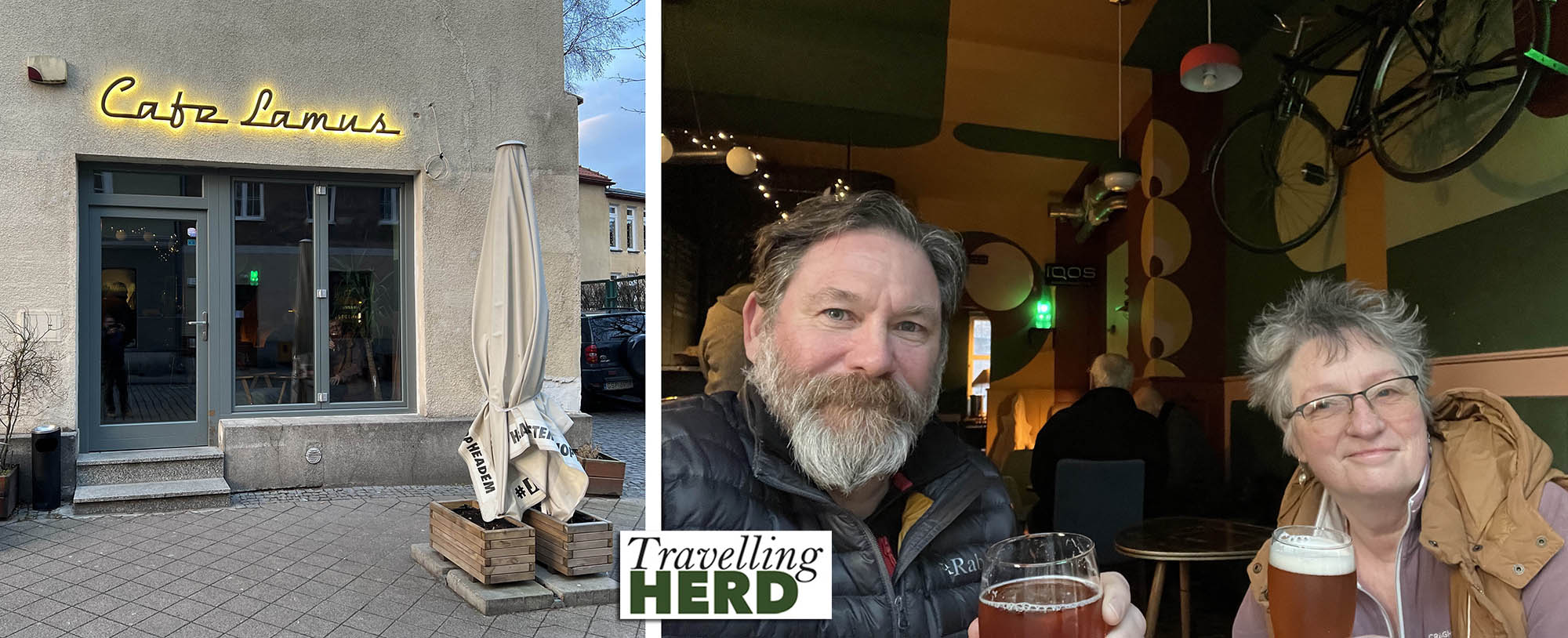
Opposite, Robert spotted the Pułapka Bar and we had to sample its wares.

The city looks beautiful illuminated at night.
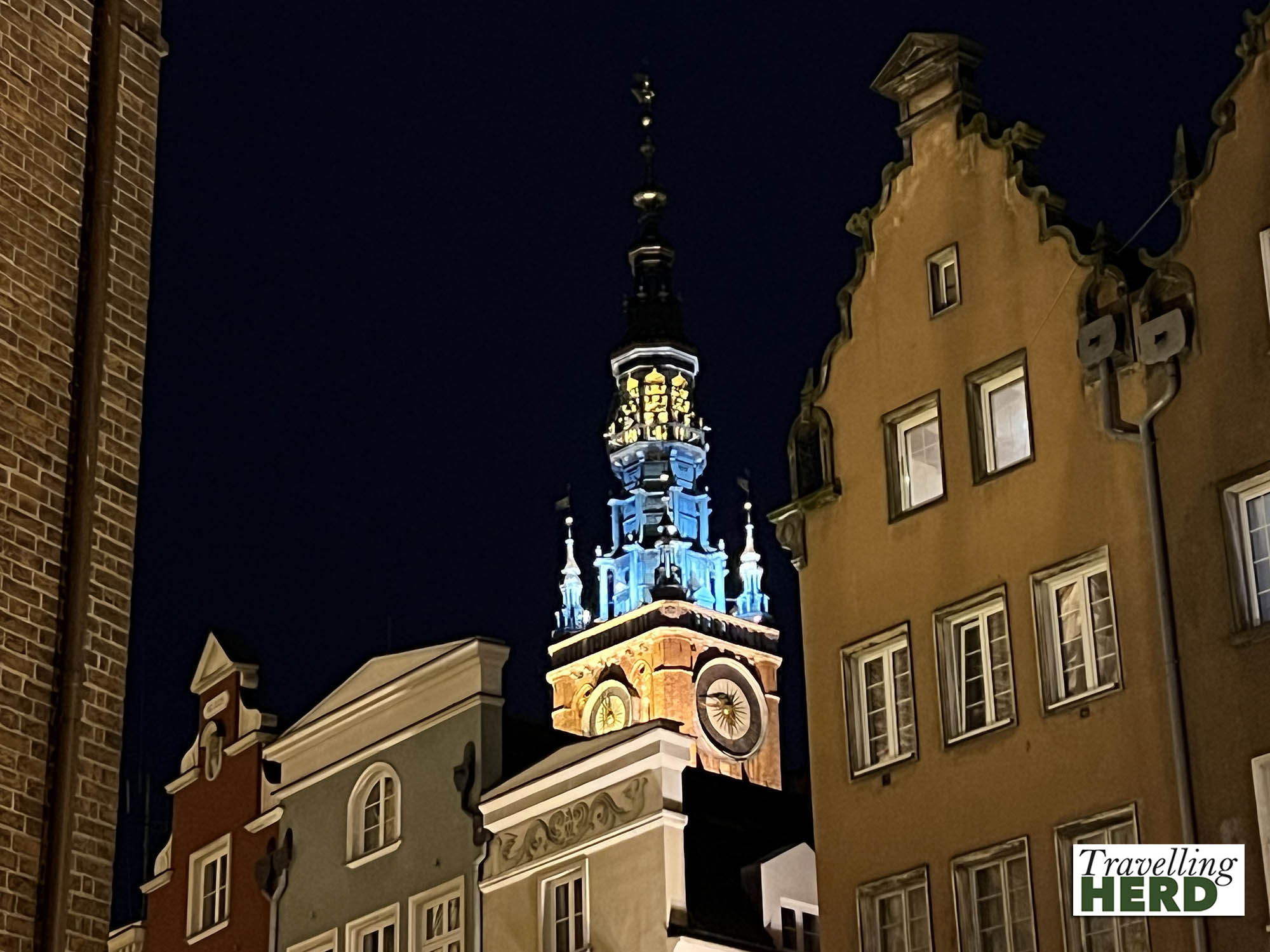
We also found a lonely, delivery robot which was flashing red distress lights.
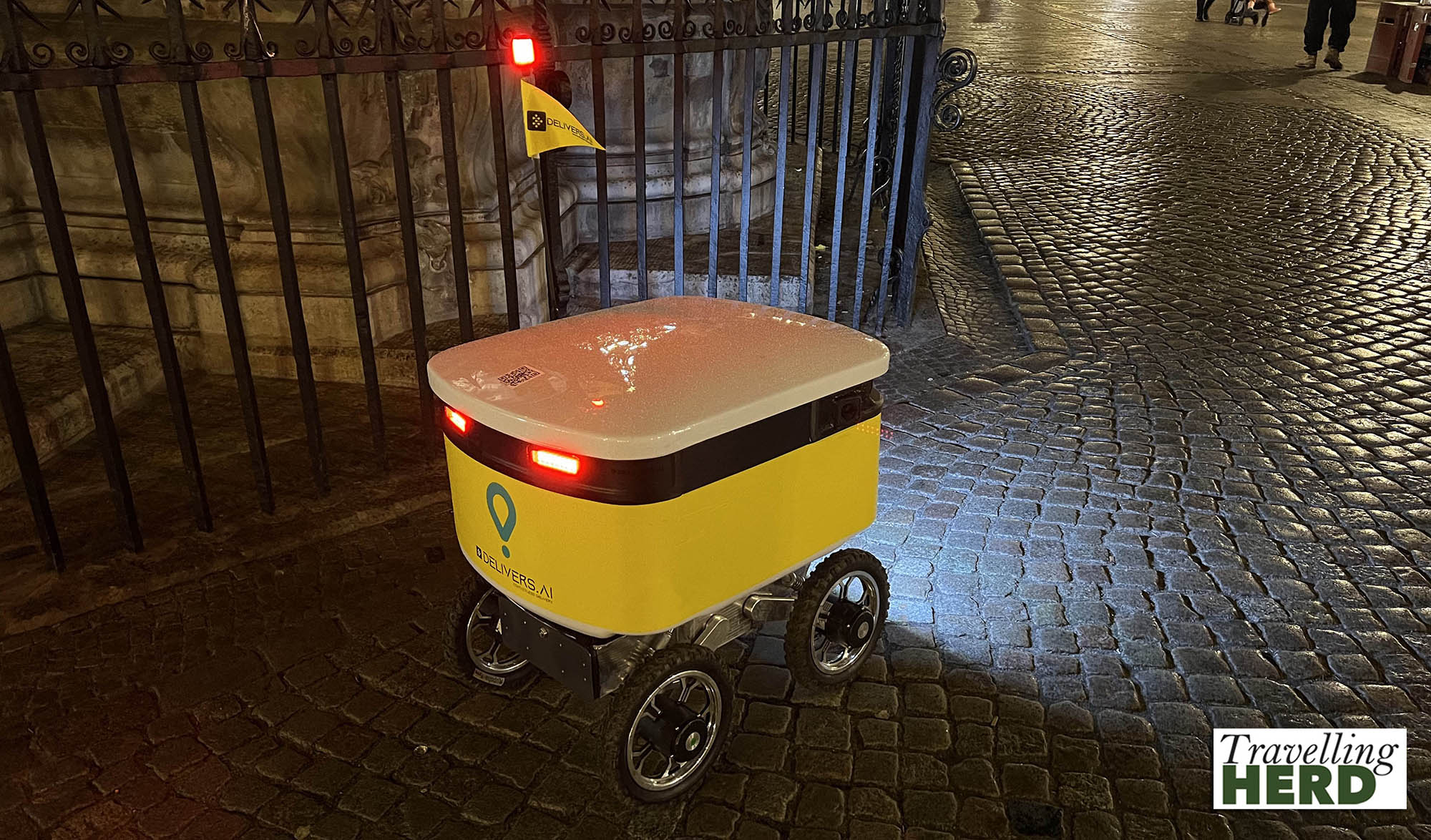
One of Robert’s favourite beer/bar chains has an outlet in Gdańsk, so we obviously had to visit.
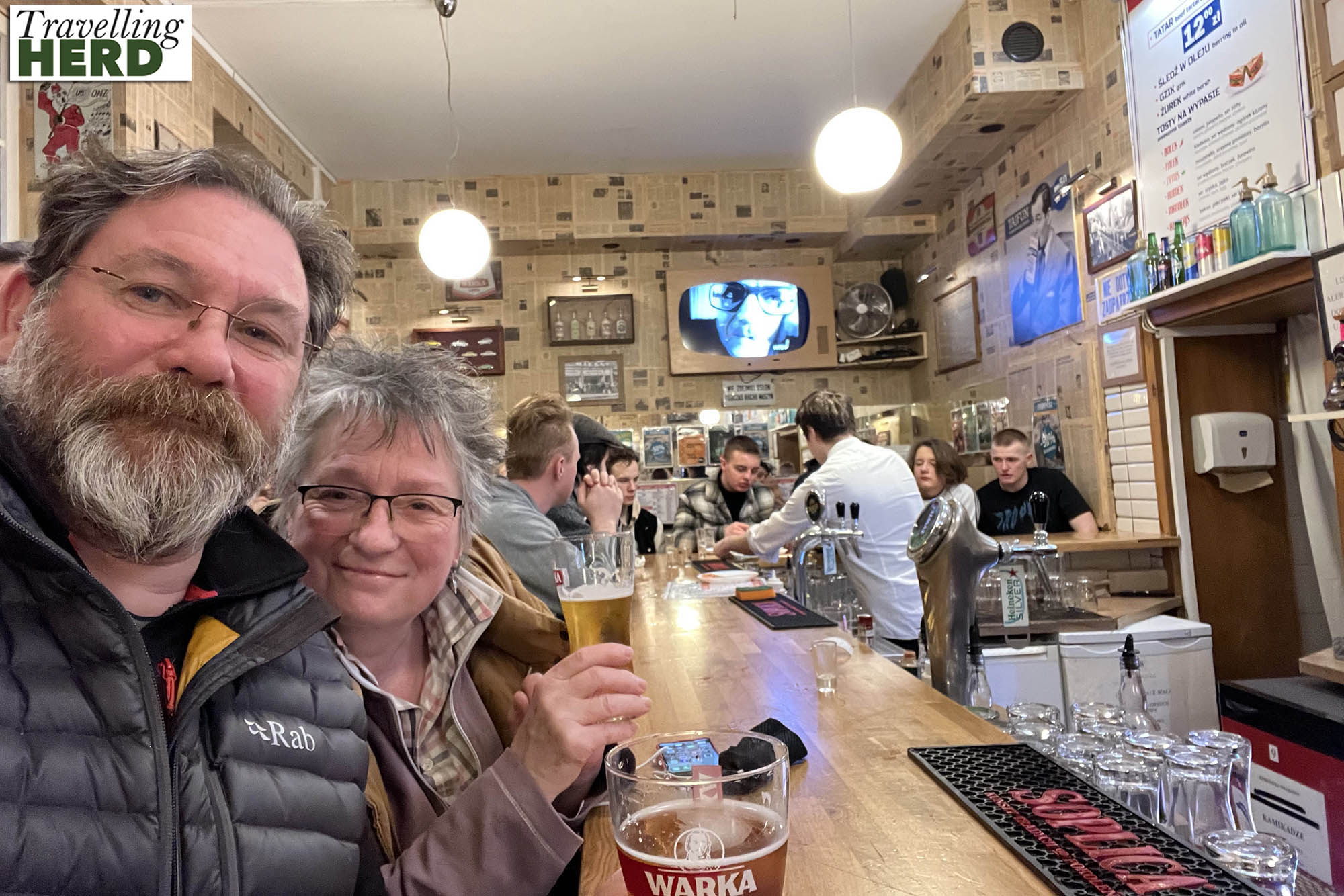
The physicist Daniel Gabriel Fahrenheit first invented the mercury thermometer in 1714 and proposed his eponymous universal temperature scale in 1724. Accounts of how he defined his scale vary, but the original paper suggests the lower point of zero °F, was established as the freezing temperature of a solution of water, salt and ammonium chloride.
Fahrenheit was born in Gdańsk in 1686 and the city celebrates his contribution to science with the Fahrenheit Monument which was illuminated for Christmas during our visit.
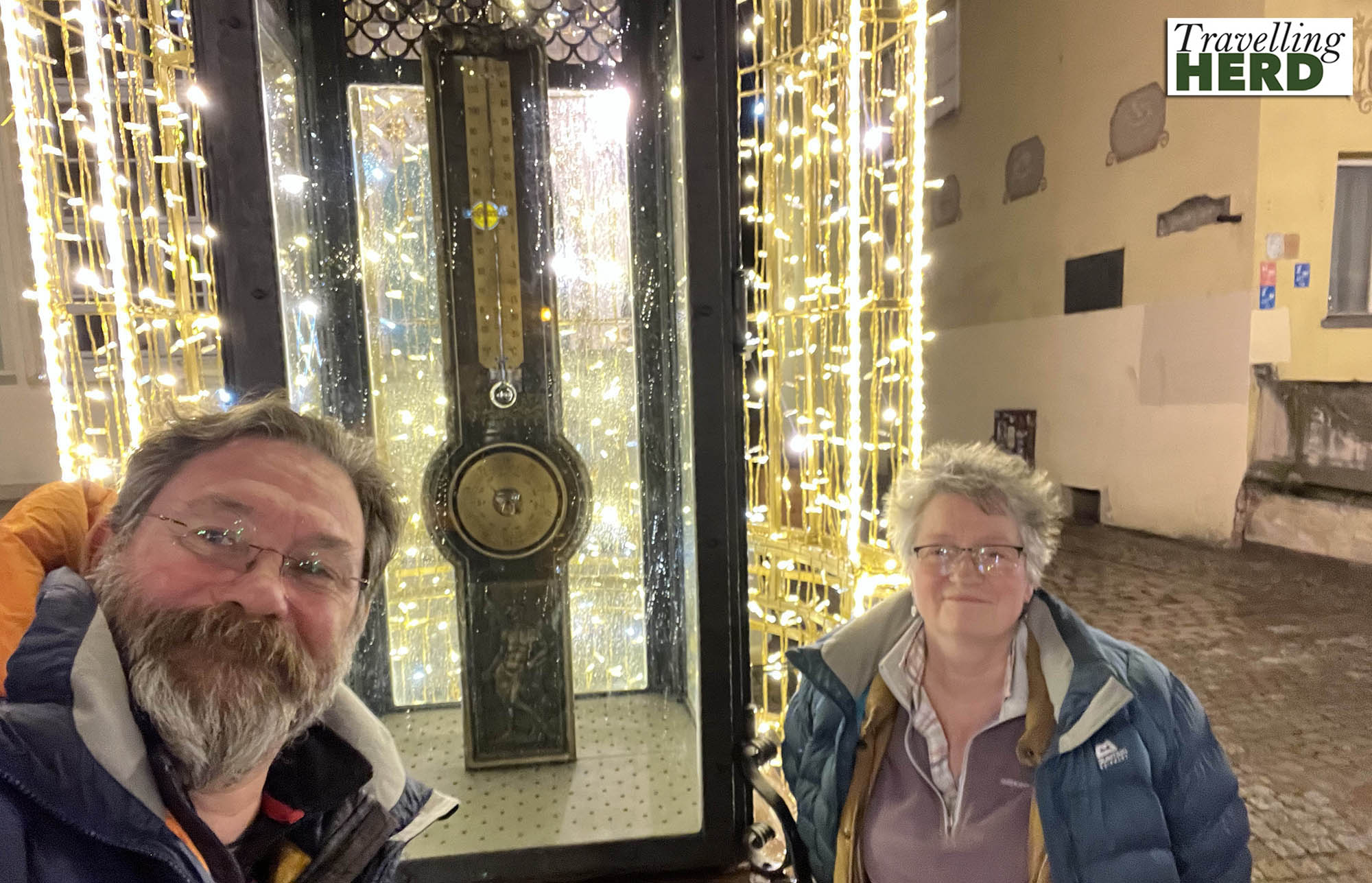
Selfie of the day:
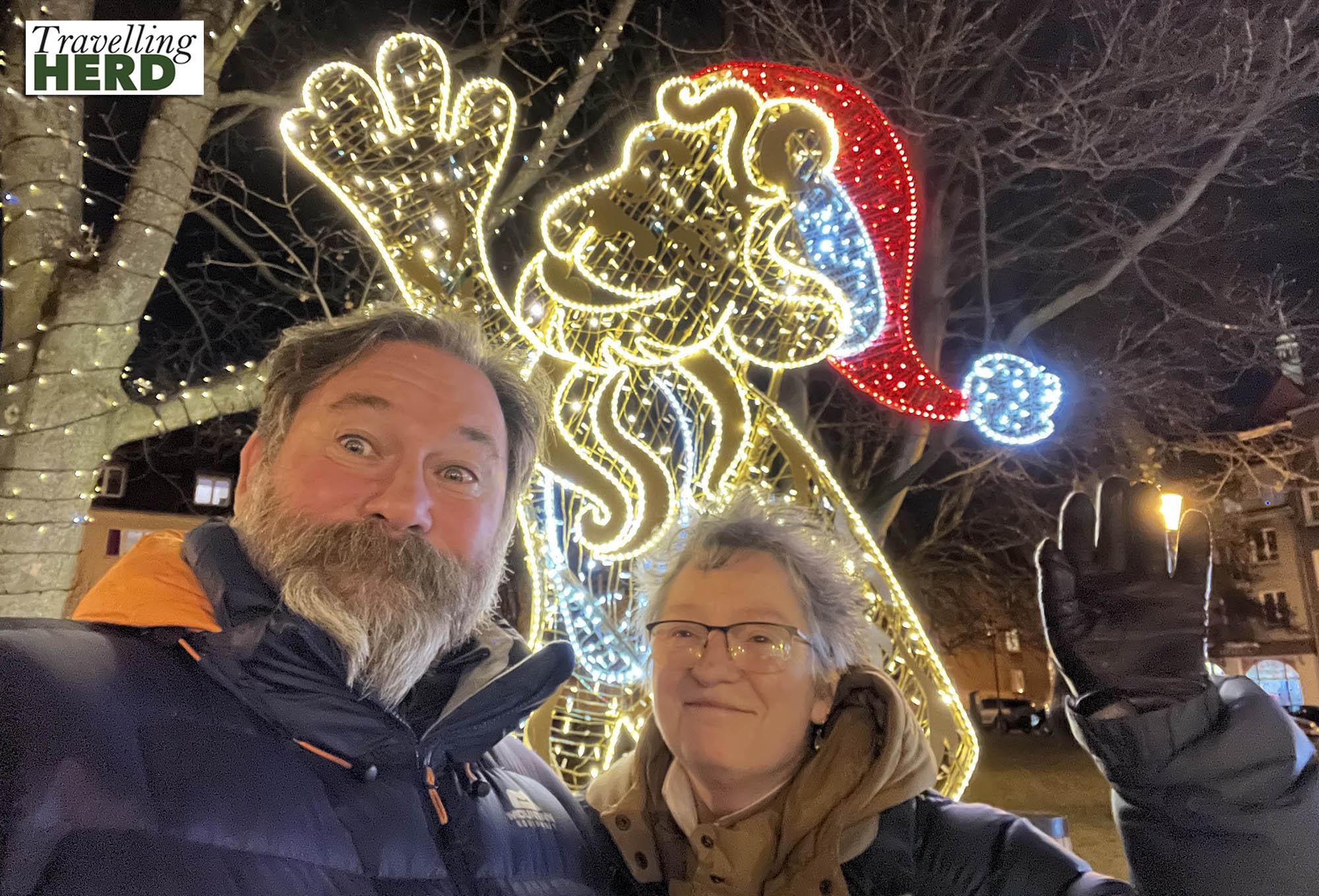
Dish of the day:

Route Map:
